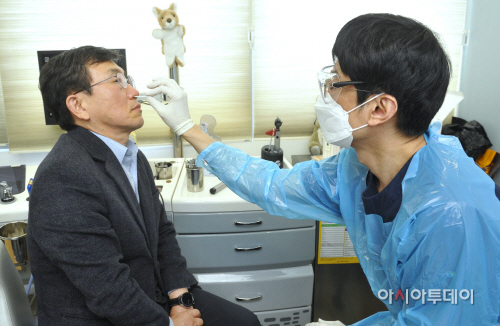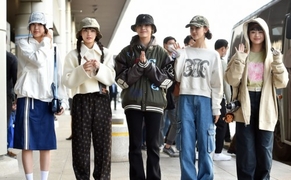 |
| Health minister Kwon Deok-chul visits a government-designated hospital./ Source: The Ministry of Health and Welfare |
AsiaToday reporter Lee Sun-young
South Korea’s daily COVID-19 cases surpassed 20,000 on the last day of the Lunar New Year holidays. Experts say the country could see over 30,000 new cases over the weekend.
The Korea Disease Control and Prevention Agency (KDCA) announced Wednesday that the country reported 20,270 new COVID-19 infections for the 24 hours of Tuesday, raising the total to 884,310. That’s up more than 1,900 from the previous day.
The country’s daily cases surpassed 20,000 for the first time since it reported the first virus case in January 2020. The figure jumped to 20,000 within a week after the number of cases rose to the first 10,000 on January 26.
The number of newly confirmed cases has steadily increased despite fewer people receiving COVID-19 tests during the Lunar New Year holiday.
The surge is due to the fast spread of the highly transmissible omicron variant which has become the country’s dominant strain. Many experts say the number of new cases will explode further. Health authorities believe that the number may exceed 30,000 right after the Lunar New Year holiday due to increased gatherings of family members during the season.
“Even if the number of new confirmed cases reaches 30,000 to 50,000 this month, we are securing medical institutions so that there will be no disruption to at-home treatment,” the government said. If 30,000 people are newly confirmed a day and most of them are treated at home for a week, then the government should be able to handle at least 210,000 people.
Fortunately, the increase of newly confirmed cases is not leading to an increase in the number of critically ill cases and deaths. This is because omicron is twice as contagious as delta, but its fatality rate is 0.15 percent, far lower than delta’s. The number of critically ill COVID-19 patients came to 278, down six from the previous day. The number of COVID-19 related deaths came to 6,787, up 15 from a day earlier. The country’s medical response capabilities are being maintained, with the nationwide utilization rate of intensive care unit beds at only 16.35 percent.
Meanwhile, the government decided to add hospitals and clinics in local communities to handle the rapidly increasing number of COVID-19 patients. People will be able to get tested and treated at local clinics and hospitals.
#omicron #Lunar New Year holiday #surge
Copyright by Asiatoday
Most Read
-
1
-
2
-
3
-
4
-
5
-
6
-
7





















